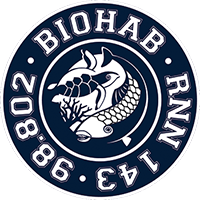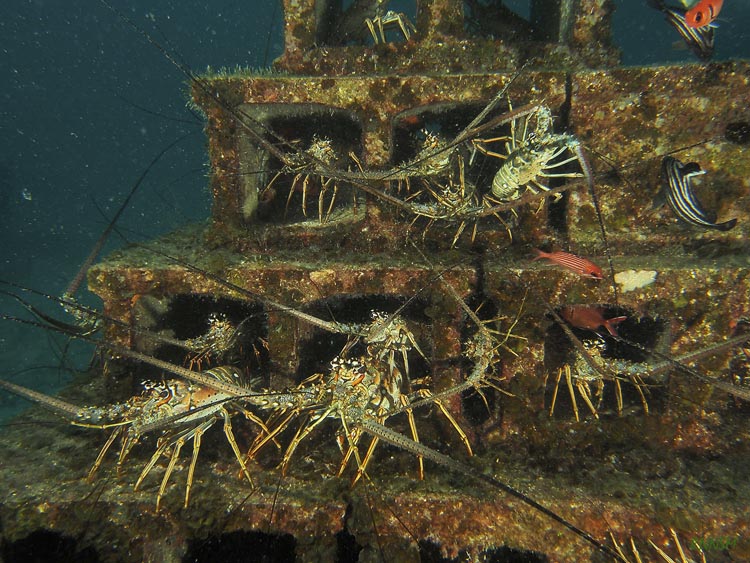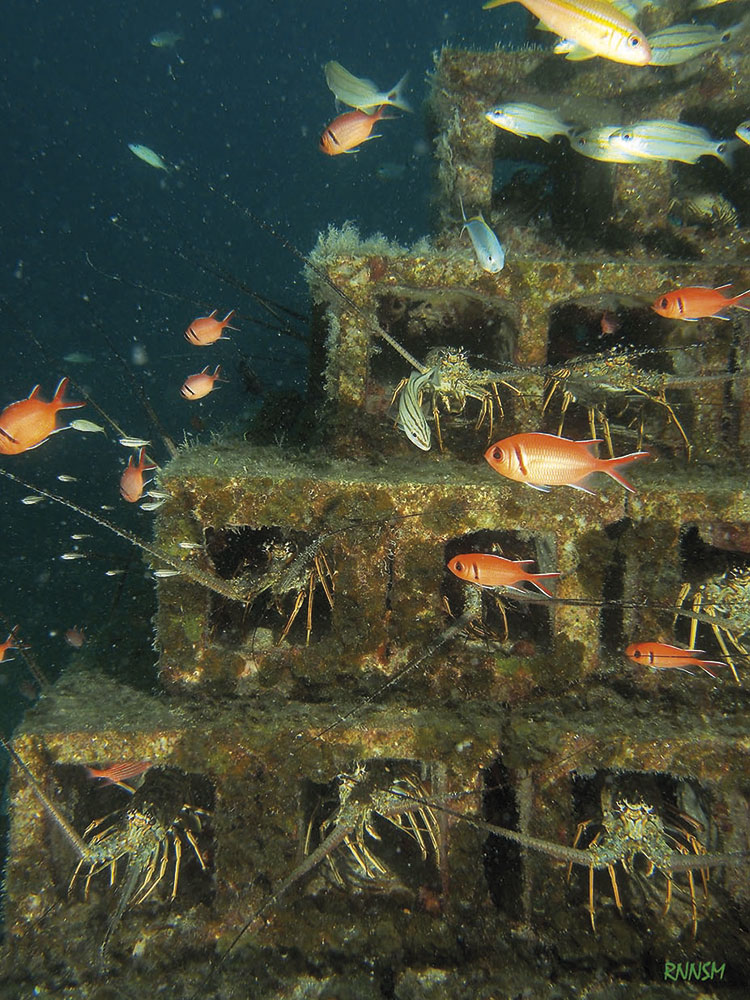The pilot project that we spoke of in our last newsletter, an artificial underwater habitat Bio- Hab created to ensure a safe habitat for thousands of larvae to live and reproduce, is already deemed a great success. Since the first module (concrete air-bricks stacked into a pyramid), was put into place in January 2014, 4 other different shaped modules have been constructed and 9 modules in total have been installed. The first monitoring dives revealed a rapid increase of fauna around the first module, followed by almost identical colonization on all the others. In only 5 months, 33 species have settled in this previously uninhabited site. 151 Individuals per 100m2 were counted in July, including 63 Caribbean spiny lobsters, a density per meter squared that is far higher than what we would normally find on natural reefs! Other species most present are blue striped grunts, mombins, arrow crabs and cleaner shrimps. The estimated biomass is 45.1kg per 100m2, of which the Caribbean spiny lobsters make up 43.5kg. Needless to say, the location of this experimental site is kept confidential by the Reserve as it may be regarded by some as a small gold mine. The project will continue moving forward with the establishment of a second site, before the end of 2014, also within the Reserve, but this time in shallower waters. The goal is to compare the types of fish that will colonize these modules, and the logistical constraints related to the depth of the site: dive time, wave impact, light source...
A total success for the BioHab project

Introduced by Japan and then taken on by the rest of the world, notably the island of Reunion, the main purpose of artificial reefs is to increase the biomass by favoring the survival of fish and crustacean species. In Saint-Martin, where coral cover is scarce, this project opens new horizons, especially for fishermen and divers. Note: up until now, no lionfish have been observed on the site.

The Caribbean spiny lobster

















